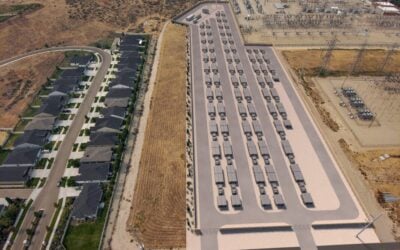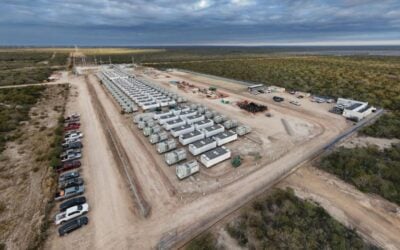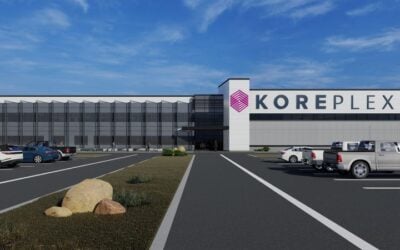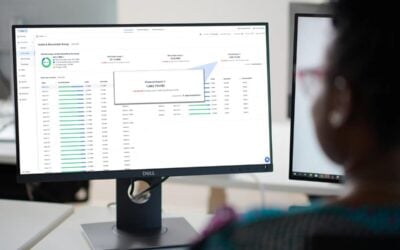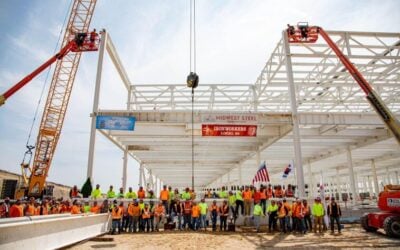
The benefits of advances in cell technology, which improve the performance and lifetime of battery storage systems, can be directly passed onto customers.
Dr Leo Zhao, head of energy storage for the Asia-Pacific (APAC) region at Trina Storage told Energy-Storage.news about some of the R&D progress the vertically integrated battery energy storage system (BESS) manufacturer and integrator has made and how it has resulted in a lowered levelised cost of storage (LCOS) for its products.
Enjoy 12 months of exclusive analysis
- Regular insight and analysis of the industry’s biggest developments
- In-depth interviews with the industry’s leading figures
- Annual digital subscription to the PV Tech Power journal
- Discounts on Solar Media’s portfolio of events, in-person and virtual
Or continue reading this article for free
Speaking earlier this month at the Energy Storage Summit Asia 2024, hosted by our publisher Solar Media, Zhao, who represents the energy storage arm of Chinese solar PV giant Trina Solar, said that cell-level innovations and improvements are vital in enhancing energy density, cycle life and safety of complete BESS solutions.
The company launched its second-generation containerised BESS solution, Elementa 2, in February of this year at our Energy Storage Summit EU in London, but quickly followed up the debut of that 4MWh, 20-foot containerised product with a 5MWh version in April at an event in the Middle East. Since then, the company has also launched a back-to-back version for the US market that combines two containers to form a 10MWh unit, with complete cell-to-AC solution integration.
The 4MWh version uses 306Ah cells, and the 5MWh uses 314Ah cells. Both are equipped with lithium iron phosphate (LFP) lithium-ion (Li-ion) cells, manufactured in-house by Trina Storage.
Energy-Storage.news has previously covered aspects of Elementa 2 and its predecessor Elementa’s complete system design and manufacturing, as well as Trina’s market strategy from ESN Premium interviews with Trina Solar executive president Helena Li and in reports around various projects.
However, at Energy Storage Summit Asia, Leo Zhao presented a deep dive into Trina’s cell-level innovations, noting their immediate impact on LCOS.
LCOS is defined as the total cost of the project over its lifetime—including capital expenditure (CAPEX) and operating expenditure (OPEX)—divided by the total energy throughput or energy discharged, again, over its complete lifetime.
Zhao told Energy-Storage.news that from Trina Storage’s OEM perspective, drivers to lowering LCOS include larger capacity cells, enabling more cycling and throughput, and reaching higher roundtrip efficiency.
“Underlying all of that is safety, because that guarantees the operation of the project over the designed lifetime,” Zhao said.
Pre-lithiation of cathode
Battery lifetime can be extended by improvements to any of the four major components of the cell, Zhao said, from cathode to anode, electrolyte and separator.
One major example of an advance that enables longer battery cell lifetime, is pre-lithiation of the cathodes.
“Pre-lithiation is technology to gradually release active lithium, to compensate for the loss of active lithium, to compensate for the loss of active liquid.”

Regular readers will note that rival Chinese manufacturer CATL recently launched a BESS solution, which the company claimed would experience no degradation in its first five years of operation.
How CATL had achieved this had been a source of speculation around the industry, before it was revealed in June that one of the manufacturer’s main strategies was, similarly, pre-lithiation.
“There are many different ways to do pre-lithiation,” Trina Storage’s Dr Leo Zhao said.
“For this particular technology, we’re working on adding extra additive materials to the cathode so that, especially at the beginning of cycling, this gradually releases extra lithium into the lithium-ion battery to overcompensate for the loss of active lithium. This can reduce degradation and also enhance the life cycle.”
This type of benefit which can sometimes be a complex proposition to understand, Zhao said, can be explained to customers in the way it directly translates into lowering the LCOS.
“We can always associate it back to earlier discussions around LCOS, because if we can ensure longer life cycles, and lower degradation, that will make sure that there’s more energy throughput over the lifecycle of the project,” Zhao said.
“This will be associated with and translated directly to the battery’s warrantied cycles. From the OEM’s point of view, how many cycles can be warrantied for the project, and how many cycles the product can be used for. This is directly translated to the warrantied usable capacity of the product because that’s associated with State of Health (SOH) and also how much is being guaranteed.”
Trina Storage head of BESS solution engineering, Beyond Li, will speak about Elementa 2 and BESS design and innovation in a sponsored Energy-Storage.news webinar tomorrow, 31 July 2024 (1pm BST, 2pm CET). Register here to attend ‘From cell to complete AC system integration with Trina Storage Elementa 2’, or to watch on-demand after the live broadcast.
Energy-Storage.news’ publisher Solar Media will host the 1st Battery Asset Management Summit USA in San Diego on 12-13 November 2024. Featuring a packed programme of panels, presentations and fireside chats from industry leaders focusing on Connecting Asset Owners and Optimizers to Maximize Strategies for Storage Assets. View the website today.

